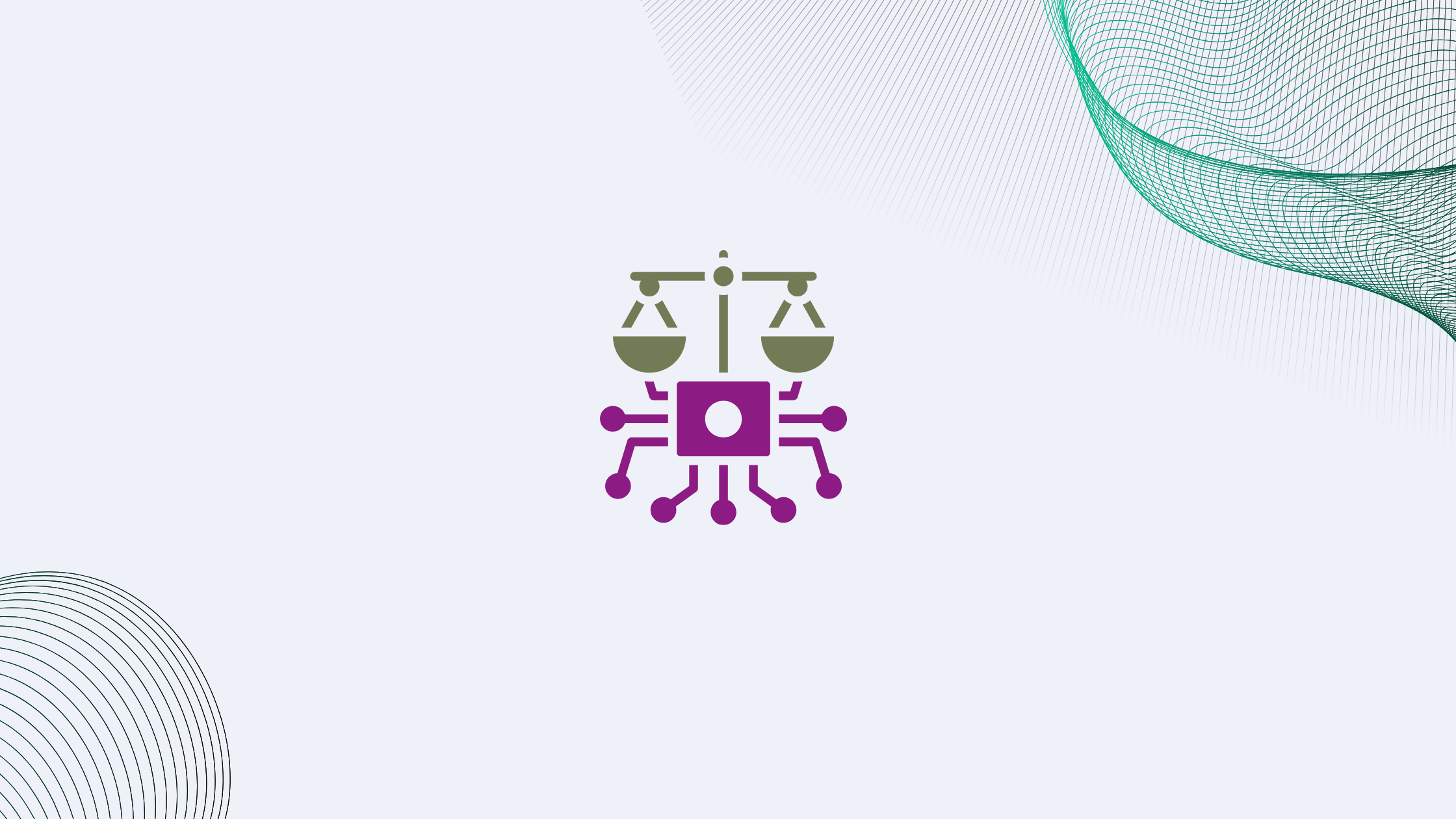Language as Technology: How Associations and AI Are Co-Creating Knowledge Language is a technology...
How to Develop a Comprehensive AI Policy for Associations
Artificial Intelligence (AI) is transforming the way associations operate, offering tools that can enhance member engagement, streamline processes, and unlock powerful insights. However, to navigate this new frontier responsibly, associations must start by developing a robust AI policy. An AI policy should not only outline ethical considerations and compliance standards but also serve as a guiding framework for decision-making and experimentation with AI technologies.
A well-crafted AI policy builds trust, ensures alignment with organizational values, and addresses potential risks. This post explores the key elements of an effective AI policy, offering a roadmap to help associations create a strategy that balances innovation with accountability.
Why Associations Need an AI Policy
AI adoption brings immense opportunities, but associations should also be aware of potential challenges, such as managing data privacy, mitigating bias, and maintaining transparency. An AI policy provides a foundation to:
- Clearly define the objectives of AI implementation.
- Establish ethical guidelines and compliance with regulations.
- Encourage responsible experimentation while addressing potential risks.
- Build trust with members, staff, and stakeholders by demonstrating a commitment to accountability and transparency.
By proactively addressing these aspects, associations can ensure their AI initiatives are both effective and aligned with their mission.
Key Components of a Comprehensive AI Policy
Developing an AI policy involves addressing several critical areas. Here are the essential components:
- Ethical Considerations: AI technologies should be used in ways that align with the association’s values, ensuring they serve as tools for fairness, accountability, and transparency. For example, an association implementing AI-driven member services could establish a framework to monitor and address any instances of bias in automated responses or decision-making processes. This might involve regular audits of AI algorithms to ensure they do not disproportionately favor or disadvantage certain groups. Additionally, the policy could mandate the inclusion of explainable AI features, so decisions made by the system are clearly documented and understandable to all stakeholders, reinforcing trust and equitable outcomes.
- Data Privacy and Security: Protecting member data is paramount. The policy should mandate the anonymization of sensitive data and provide clear guidelines on how member information will be used in AI applications. Additionally, it should outline the safeguards in place to prevent data breaches and ensure compliance with privacy regulations.
- Transparency and Accountability: Transparency fosters trust. The policy should specify how AI decisions are made and communicated to members and stakeholders, including clearly indicating when AI is being used in processes or services. It should also establish accountability mechanisms, such as assigning oversight roles and implementing regular audits of AI systems to ensure compliance and trustworthiness.
- Stakeholder Involvement: An inclusive policy development process is key to addressing diverse perspectives and building support. Engage members, employees, and AI ethics experts to ensure a holistic approach. This collaboration helps address concerns, identify risks, and create a policy that reflects the organization’s collective values.
- Adaptive Framework: AI is a rapidly evolving field. The policy should include provisions for regular reviews and updates to adapt to emerging technologies and ethical standards, while also preventing your association from being bound to outdated policies that could hinder progress. This ensures the policy remains both relevant and effective as the landscape of AI continues to evolve.
Steps to Develop Your AI Policy
- Define Objectives: Start by identifying the goals of AI implementation. What does your association aim to achieve with AI? Ensure these objectives align with your strategic mission.
- Engage Stakeholders: Include input from key groups such as board members, staff, and members. Diverse perspectives will enrich the policy and foster buy-in. While diverse perspectives are essential to crafting a well-rounded AI policy, it’s important not to let the process become a bottleneck. The rapid pace of AI advancements means your association must remain agile, ready to implement changes swiftly to stay competitive and avoid falling behind.
- Assess Risks and Opportunities: Conduct a thorough evaluation of how AI might impact your association, highlighting both the potential benefits and challenges.
- Draft the Policy: Based on your objectives, stakeholder input, and risk assessment, draft a policy that includes ethical guidelines, data privacy measures, and accountability structures.
- Implement and Communicate: Roll out the policy with clear communication to all stakeholders. Offer training sessions to ensure everyone understands the guidelines and their responsibilities.
- Review and Update Regularly: Establish a schedule for periodic reviews to keep the policy in line with technological advancements and evolving ethical standards.
---
Sample AI Policy for Associations
Policy Title: Responsible AI Use Policy for [Association Name]
Introduction: This AI policy outlines [Association Name]’s approach to adopting and managing artificial intelligence (AI) technologies. The aim is to balance innovation with responsibility, ensuring that AI tools serve our mission, benefit our members, and reflect our organizational values.
Scope: This policy applies to all AI applications used by the association, including member services, operations, communication, and data analysis.
Ethical AI Use: AI systems deployed by the association will:
- Align with our core values of transparency, inclusivity, and fairness.
- Avoid perpetuating bias or discrimination through ongoing monitoring and evaluation.
- Be explainable to members, ensuring clarity on how decisions are made.
Data Privacy and Protection:
- All AI systems will comply with applicable data privacy laws, including GDPR and CCPA.
- Member data used for AI applications will be anonymized and securely stored to minimize risks.
- The association will maintain clear, documented procedures for handling and storing sensitive information.
Transparency and Accountability:
- Members will be notified when AI tools are used in services, and any limitations of the tools will be clearly communicated.
- A designated AI oversight team will conduct regular audits of AI systems and address concerns raised by members or staff.
Stakeholder Engagement:
- The policy will evolve with input from members, employees, and external experts.
- Feedback mechanisms will be in place to gather input and address concerns as AI applications grow.
Implementation:
- Training: Staff will receive training on responsible AI use and compliance with this policy.
- Pilot Projects: New AI initiatives will begin with pilot projects to evaluate effectiveness and identify potential risks.
- Feedback Mechanism: Members and staff will have access to a feedback mechanism for reporting issues or concerns related to AI systems.
Continuous Improvement:
- The AI policy will be reviewed annually to incorporate advancements in AI and adapt to changes in regulations or ethical standards.
Approval: By adopting this policy, our association commits to leveraging AI responsibly to serve our members and advance our mission. This policy has been reviewed and approved by the Board of Directors on [Date].
---
This example offers a starting point for your own policy. Tailor it to reflect your unique organizational goals, values, and operations.
A comprehensive AI policy is a cornerstone of responsible AI adoption for associations. By addressing ethical considerations, safeguarding member data, and involving diverse stakeholders, associations can create a framework that fosters trust and innovation. Regularly reviewing and updating this policy ensures that your organization remains adaptive and aligned with the latest developments in AI technology.
Ready to take the first step? Start building your association’s AI policy today to unlock the full potential of AI while staying true to your mission and values.
.png?width=173&height=70&name=Betty_RGB%201%20(1).png)



